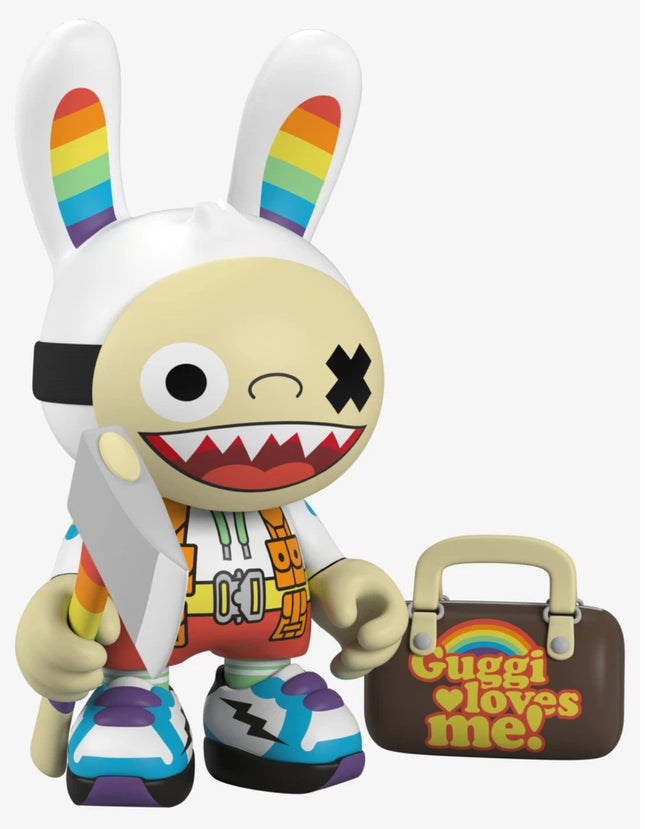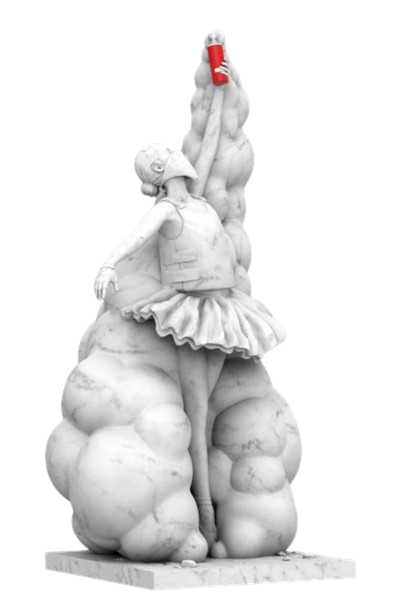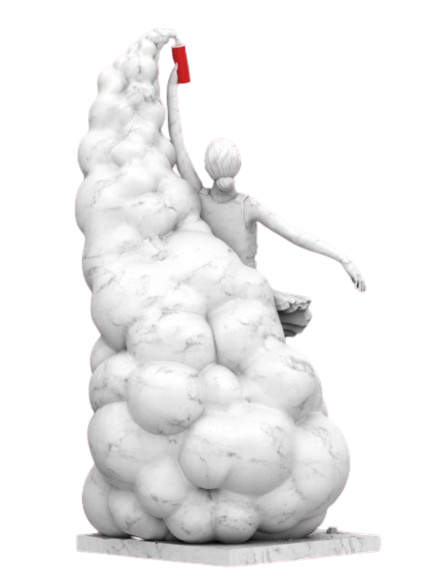
Activism


Guggimon Pride Fashion EDC SuperGuggi Art Toy Guggimon x SuperPlastic
Pride Fashion EDC SuperGuggi Limited Edition Vinyl Art Toy Collectible Artwork by street graffiti artist Guggimon. PRIDE was created at Guggi’s historic after-after party when vibes were running high and electrolytes were running low
$283.00$181.00


Abell Octovan The Beauty of Rebellion Ballerina Riot Sculpture by Abell Octovan
The Beauty of Rebellion Limited Edition Polystone Art Toy Collectible Artwork by street graffiti artist Abell Octovan. Set to challenge the notion of beauty in today's society; the ballerina is all geared up with a vest and mask, holding a smoke grenade and twirling and dancing amid a rebellion. Drawing inspiration from classic Greek sculptures, The Beauty of Rebellion features a smooth marble-like effect. The spray can is highlighted with a red accent, a representation of the desire to break free from the beauty conventions we all know. A Dance of Dissent Abell Octovan's "The Beauty of Rebellion" merges the classical grace of a ballerina with the subversive edge of street art, creating a polystone resin sculpture that challenges and redefines conventional aesthetics. This 2021 limited edition collectible embodies a visual protest against the rigid standards of beauty that permeate society, presenting a figure of elegance poised in an act of insurrection. The collectible portrays a ballerina, traditionally an icon of beauty and poise, adorned not with the typical delicate attire but with a vest and mask, holding a smoke grenade. This juxtaposition creates a striking image of contrast and conflict – amid a pirouette, the dancer is simultaneously a symbol of rebellion. The piece draws a parallel between the disciplined form of ballet and the chaotic nature of protest, suggesting that both require a certain degree of passion and precision. Marble and Movement: A Statue of Subversion Octovan's sculpture, with its smooth marble-like effect, nods to the classical Greek statues that epitomize an enduring standard of beauty and form. However, "The Beauty of Rebellion" subverts this tradition by introducing elements of street culture, namely the spray can, highlighted in red as a beacon of defiance. This very spray can represent the artist's – and society's – urge to break free from the constraints of conventional beauty norms. The ballerina stands on a cloud of billowing smoke, a base that further emphasizes the theme of upheaval. While symbolizing chaos, the smoke also serves as a pedestal for the figure, elevating her act of rebellion to one of artistic and cultural significance. This base grounds the sculpture in the realm of street pop art & graffiti artwork, where messages are often conveyed through bold and unexpected visual statements. Defining Beauty Through Defiance "The Beauty of Rebellion" is not merely a collectible but a statement on the evolving perceptions of beauty in contemporary culture. Abell Octovan uses this piece to spark conversation about the societal pressures of beauty standards and the power of individual expression. The ballerina's dance becomes a metaphor for the struggle against these pressures, her grace a form of resistance, and her grenade a tool for societal awakening. In the context of street pop art & graffiti artwork, Octovan's work reflects the genre's capacity to address severe cultural and social issues through art that is accessible yet provocative. The sculpture encourages viewers to consider the many forms of beauty and how art can challenge the status quo. Legacy of Rebellion in Art Abell Octovan's "The Beauty of Rebellion" joins the ranks of iconic works within street pop art & graffiti artwork that have redefined how beauty is represented and understood. By fusing elements of classical art with modern-day symbols of resistance, Octovan creates a dialogue that extends beyond the sculpture into the fabric of societal discourse. The collectible is a testament to the enduring power of art to confront and question. In its blend of the classical and the contemporary, "The Beauty of Rebellion" stands as a symbol of the ongoing conversation about beauty, expression, and the role of art in challenging the conventions we have come to accept. It is a dance of dissent, captured in resin, echoing through the halls of modern art.
$750.00





